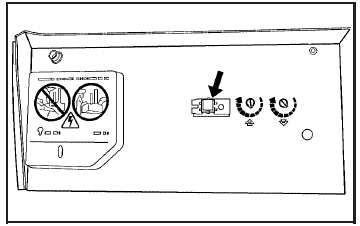Programming Universal HomeRemote — Rolling Code
Rolling code garage door openers are used for garage doors produced after 1996 and are code protected. Rolling code means the coded signal is changed every time your remote control garage door opener is used.
Programming a rolling code garage door opener involves time-sensitive actions, so read the entire procedure before you begin. If you do not follow these actions, the device will time out and you will have to repeat the procedure.
Follow these steps to program up to three channels:
1. Press the two outside buttons at the same time for one to two seconds, and immediately release them.

2. Go to the garage. Locate the garage door motor head and press and release the “learn” button.
After pressing the “learn” button, you have 10 to 30 seconds to complete Step 4 depending on your garage control unit. If you cannot locate the “learn” button, refer to the owners guide for your garage door opener.
3. Press and hold the button you would like
to use to control the garage door until the
garage door moves. The indicator light,
above the selected button, should slowly
blink. You may need to hold the button from
five to 20 seconds.
4. Immediately release the button when the
garage door moves. The indicator light will
blink rapidly until programming is complete.
5. Press and release the button again. The
garage door should move, confirming that
programming is successful and complete.
To program another device such as an additional garage door opener, a security device, or home lighting, repeat Steps 1 through 6, choosing a different function button in Step 4 than what you used for the garage door opener.
See also:
Clock
The infotainment system controls are used to access the time and date settings
through the menu system. The clock menu can be only be used with the radio on while
in ON/RUN or ACC/ACCESSORY.
See ...
Flash-to-Pass
To flash the high beams, pull the turn signal/lane change lever all the way toward
you. Then release it. ...
Transmission
Driver Shift Control (DSC)
Driver Shift Control (DSC) allows you to shift an automatic transmission similar
to a manual transmission. To use the DSC feature:
1. Move the shift lever from D (Drive) ...


